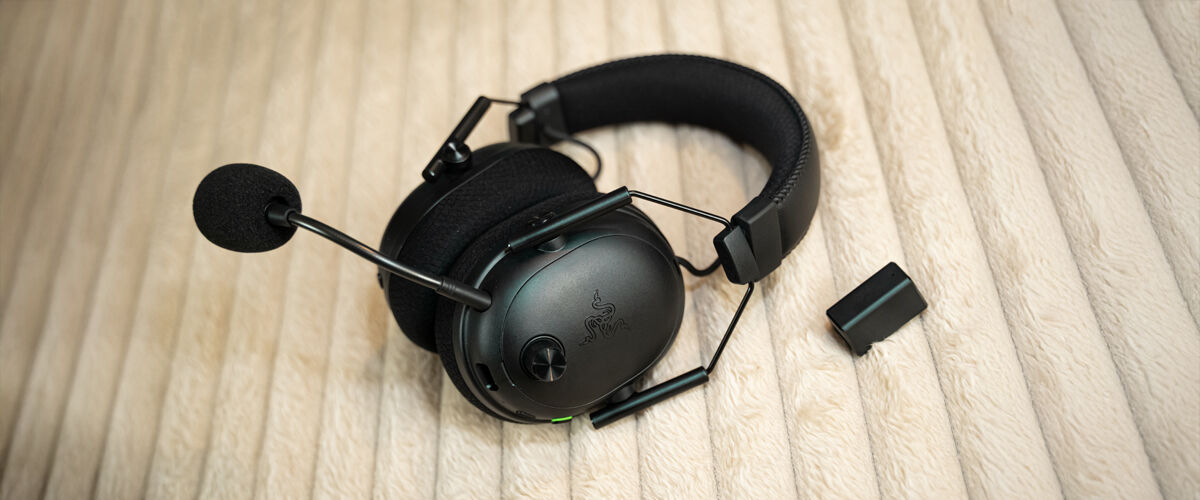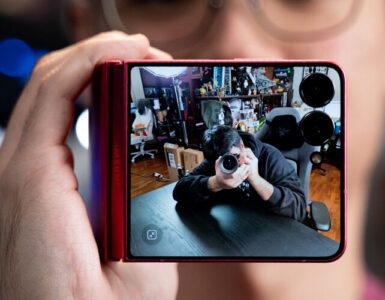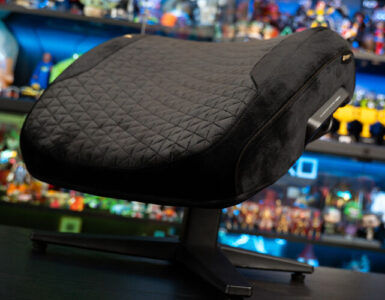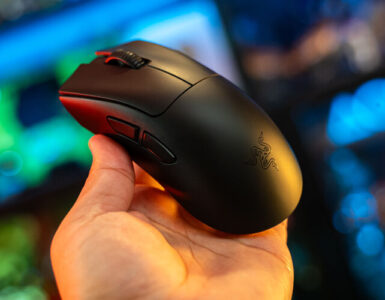Legacies that stand the test of time are few and far between, especially in the incredibly competitive world of gaming. Razer has proven time and again that its headphones will always have a place in the hearts of gamers from every generation, with some choosing the haptic Kraken headphones for a more immersive gaming experience, the Barracuda for multi-platform use with Razer’s signature aesthetic, or the Blackshark catered towards professional esports players.
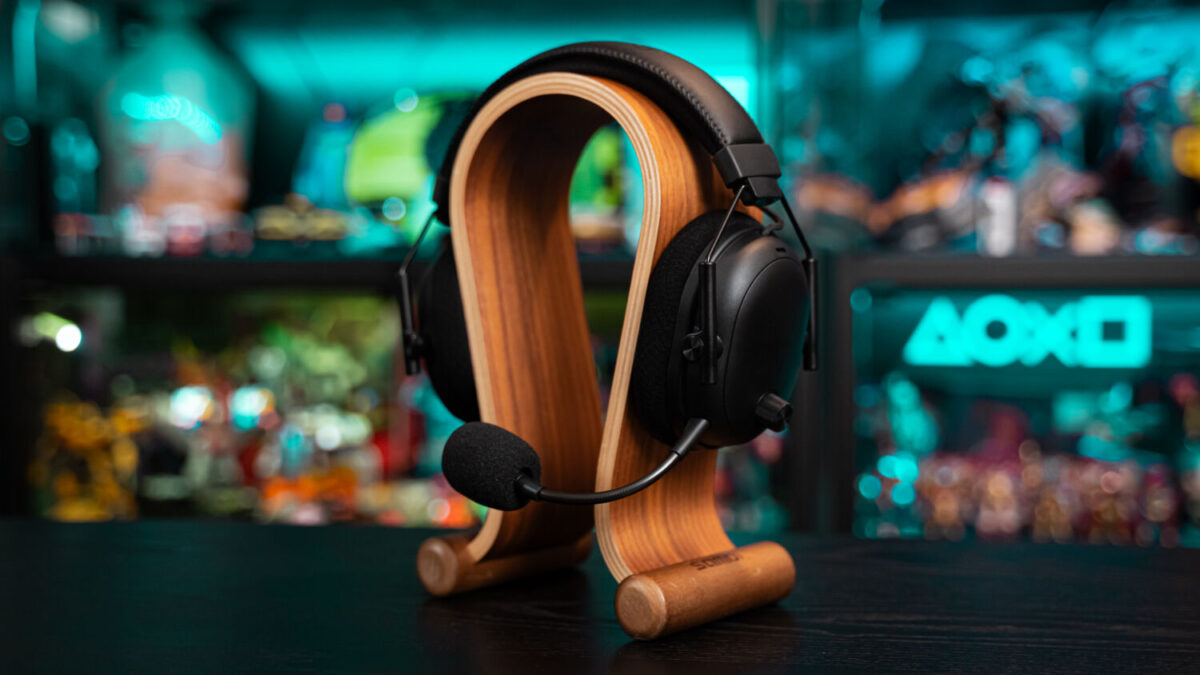
With four iterations over the last 13 years, the Razer Blackshark V3 Pro continues this legacy with key upgrades including Active Noise Cancellation and ultra-low latency audio, which do well with players looking for more ways to block out distractions, while listening out for accurate real-time audio cues that professional first-person shooter (FPS) players need to put numbers on the scoreboard.
On the surface, it is difficult to tell the difference between the previous iterations of Blackshark headphones. Keeping in line with its predecessor’s all-black aesthetic, it’s devoid of RGB lighting but with a slight bit of gloss on the Razer logos on both sides of the headphones’ cans, reflecting how seriously it takes itself, especially as the headset of choice for esports professionals. What needs to be mentioned is the replaceable magnetic faceplates on either side of the headphones, which opens up possibilities for official or 3D printed designs to personalise your set of cans in the near future.
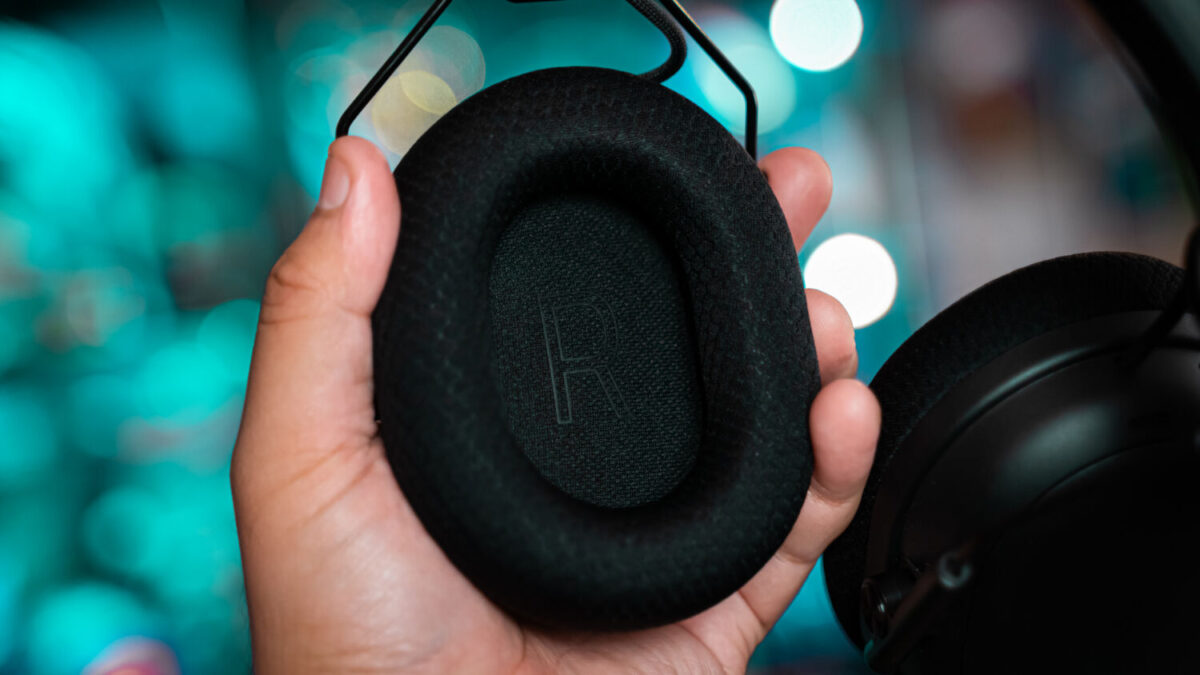
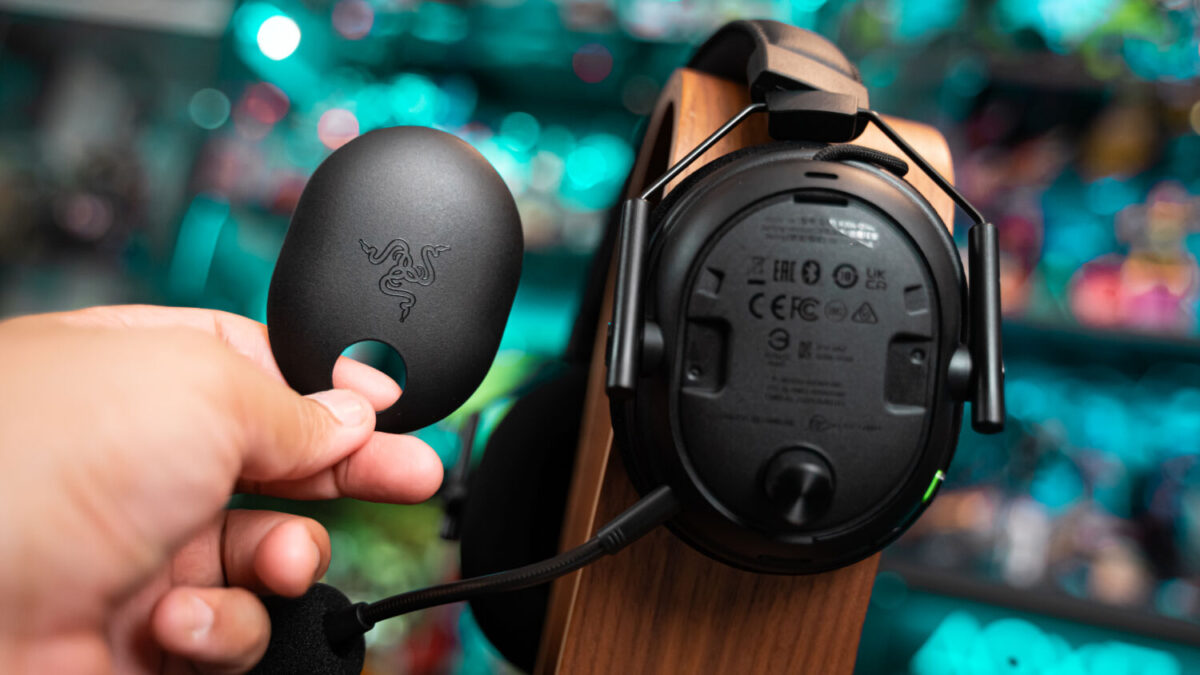
The placement of the buttons hasn’t changed much from its predecessors, except for an additional customisable roller and the ANC, short for active noise cancellation, control button that cycles through its modes. Owners of previous headsets would feel right at home navigating around Blackshark V3 Pro, and the same thing can be said when it comes to adjusting the length of the headphones.
Its dual-seal memory foam ear cushions use layers of fabric and leatherette that prove comfortable, together with 15-degree swivel joints to better conform the headphones to the angle of your ears, all working in tandem to provide a seal for the headphones’ ANC. The ear cushions are also lined with moisture-wicking properties that are made to absorb sweat during long hours of usage and ensure comfort throughout your session. The cushions are breathable, and our ears aren’t swimming in sweat after wearing them for four hours and longer in a room only equipped with a ceiling fan in sunny Singapore.
However, what isn’t comfortable is the weight of the Blackshark V3 Pro and its crushing clamping force needed to keep it in place. At 367 grams, the Blackshark V3 Pro is the heaviest in its lineage and 103 grams heavier than the Blackshark V3 and Hyperspeed counterparts, which makes sense since there are more features packed into the Pro edition. However, the lack of weight distribution means that the majority of the weight would be pulling both of your ears down.
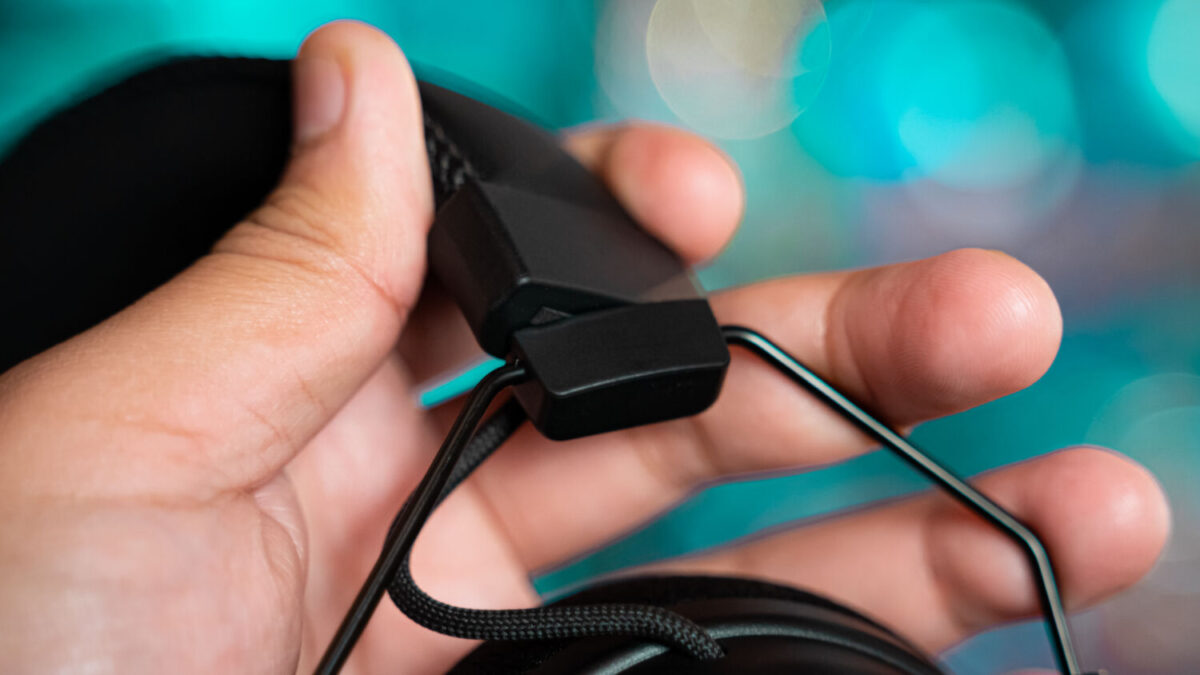
The clamping force needed to keep the cups on your ears should also feel proportional to the weight of the headphones, but here, it makes one feel like their head is being squashed, especially for folks with wider heads. The discomfort is felt immediately when putting the headset on as the clamping force pushes into the middle of the head, and when coupled with the weight of the headphones bearing down on you induces a headache, no matter how much you adjust the length of the headphones. It’s bad enough that the pressure forms a pulsation in your head the longer you keep them on.
These factors would be dealbreakers for many because the features and upgrades of the Blackshark V3 Pro cannot be fully enjoyed without the constant pressure on the head. One may argue that the headband would break into a more comfortable form over time, but it’s unclear how long it will take to reach that point. Add in the hybrid ANC’s pressure to the mix, and users are in for even more discomfort.
Hybrid Active Noise Cancellation is a fresh feature for the Blackshark line, previously only seen in the Razer Barracuda Pro and Hammerhead True Wireless Pro products some years back, and there is a noticeable improvement here. The ANC is available in four levels and can be adjusted via the Razer Synapse software and the Razer Audio mobile app, though the level has to be set within the app and cannot be changed with the physical ANC button, which is the norm for most headphones.
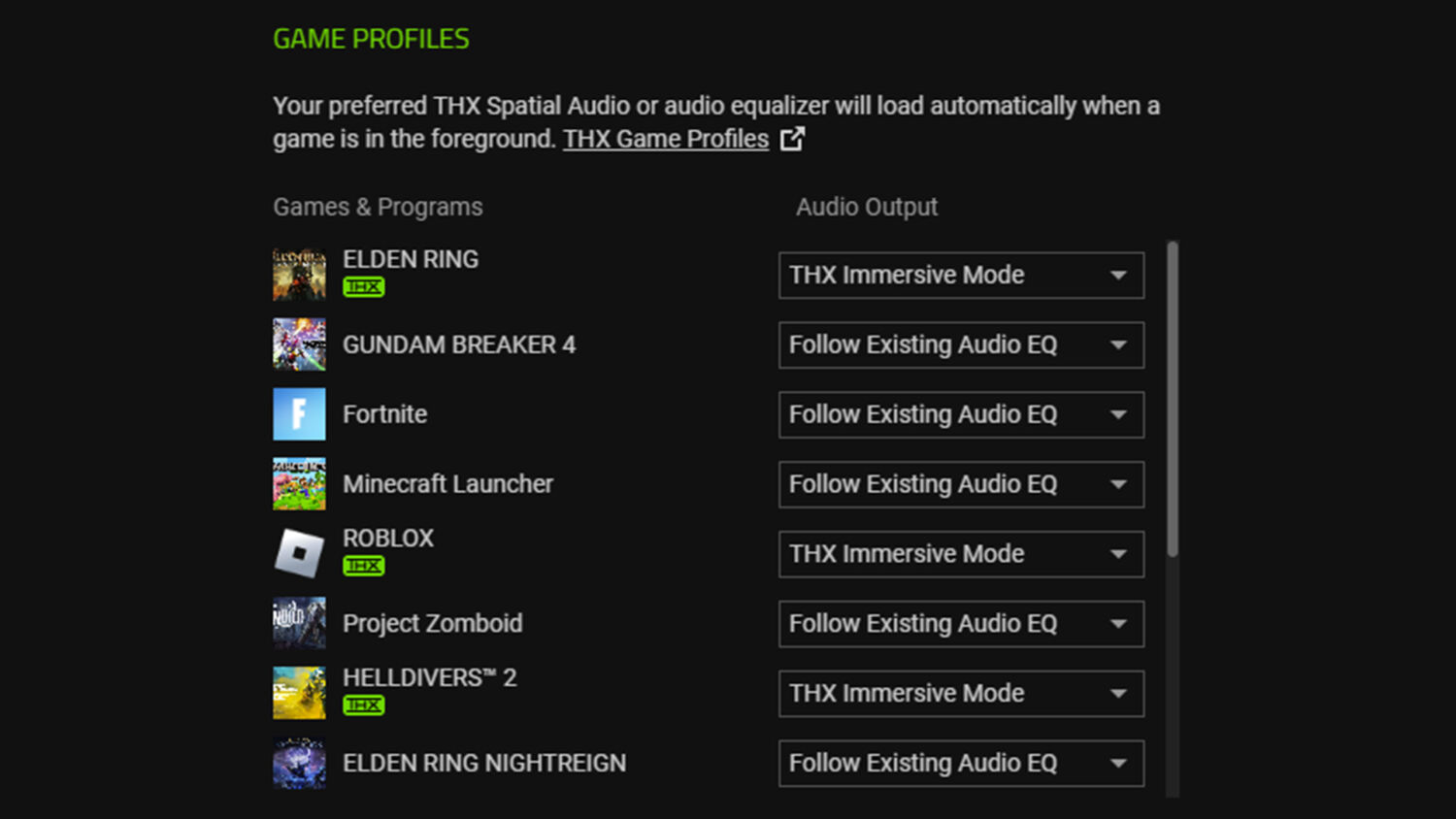
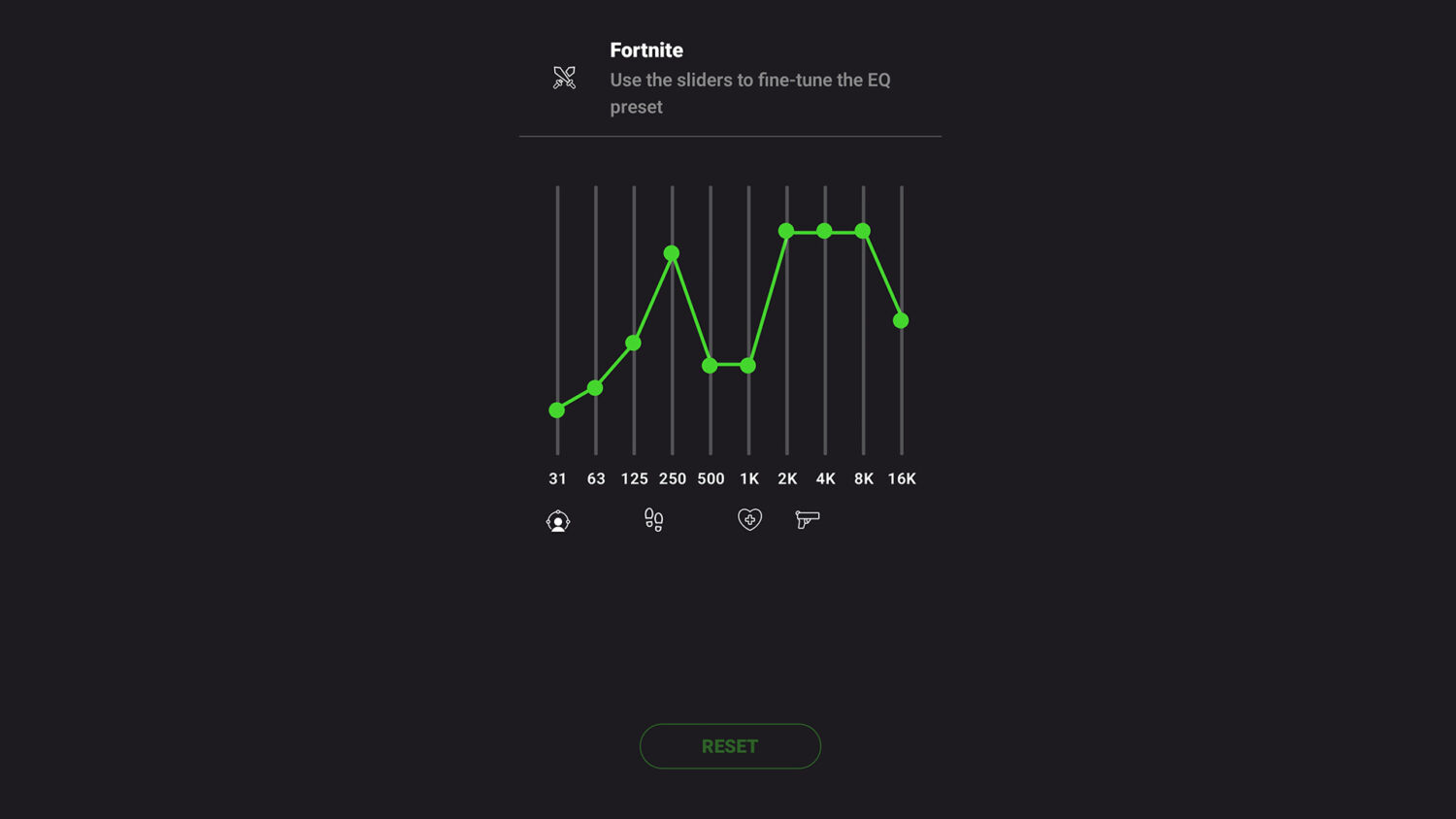

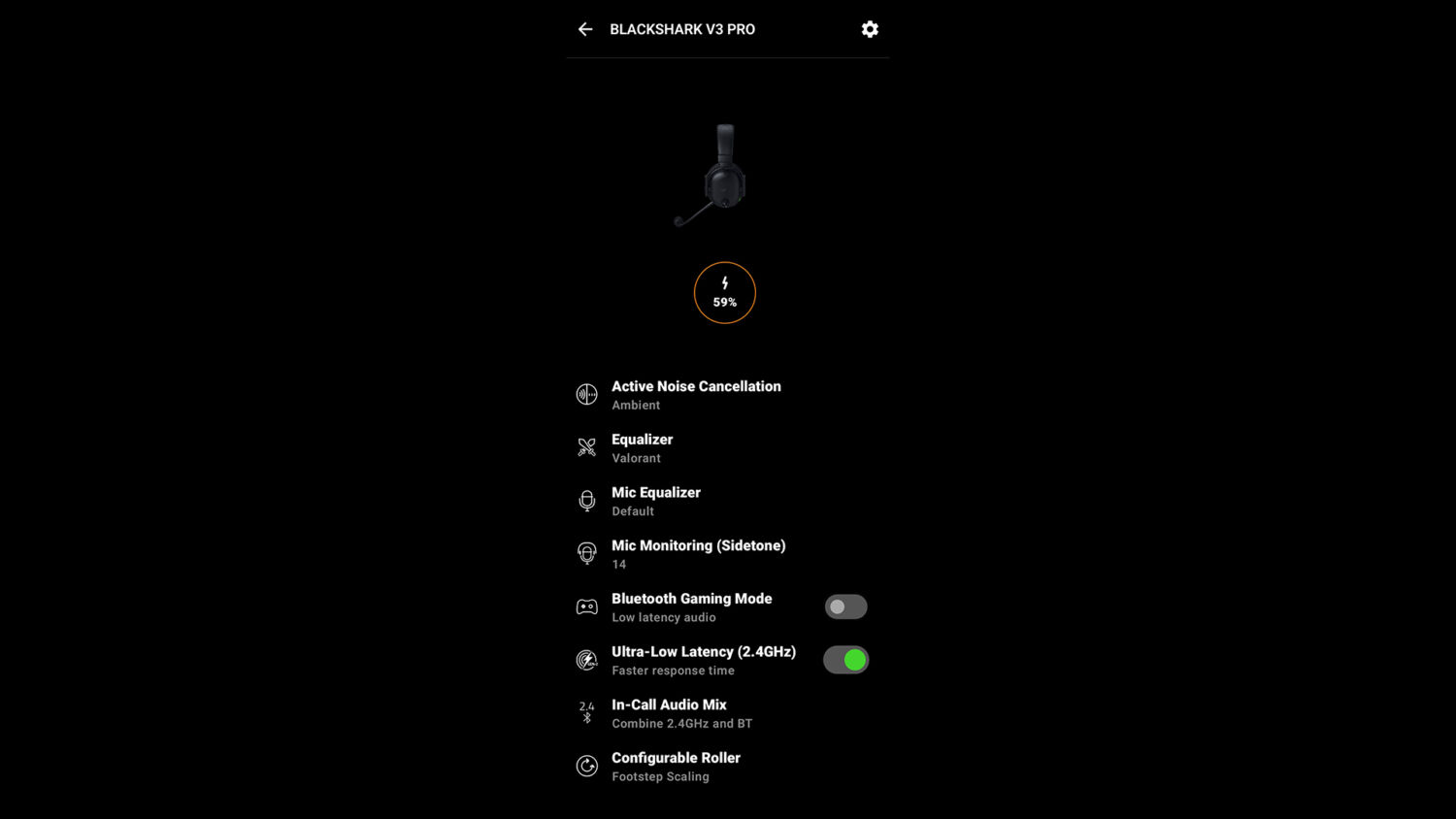
The lowest level of ANC does little to minimise ambient noise, with the highest improving slightly on voice and music reduction, such that users can hear the rumbling of its four microphones as it tries to fight against the ambient sound. The seal on the ear cushions isn’t as tight as expected, however, rendering its noise cancellation efforts a bit of a farce, and making us wonder how esports players would feel in a hall of screaming fans when the headphones can barely minimise the sound of a ceiling fan.
When it comes to the audio performance, the Blackshark V3 Pro performs rather decently, and any gamer should be satisfied with its bass-heavy nature that drowns out the highs and mids, aligning with most gaming headphones Listening to Michael Jackson’s “Beat It” with the default EQ, you can tell that his vocals and the guitars are thin, while the basslines and the drum’s floor tom are prominent, they do not sound punchy at all. Imagery is somewhat accurate, although its soundstage is narrow even with Razer’s TriForce Bio-Cellulose 50mm drivers.
Granted, these headphones aren’t made for music, but given how long they have been in the business of making audio peripherals, you’d think Razer would’ve picked up a thing or two along the way. There are 12 custom EQ options tuned by professional esports players from popular FPS titles that act as templates for anyone unfamiliar with tweaking EQs for your game, and it’s a neat little feature that gets esports fans closer to their favourite players. You are able to save nine EQ profiles on the headset and cycle through them on the fly with the SmartSwitch button.
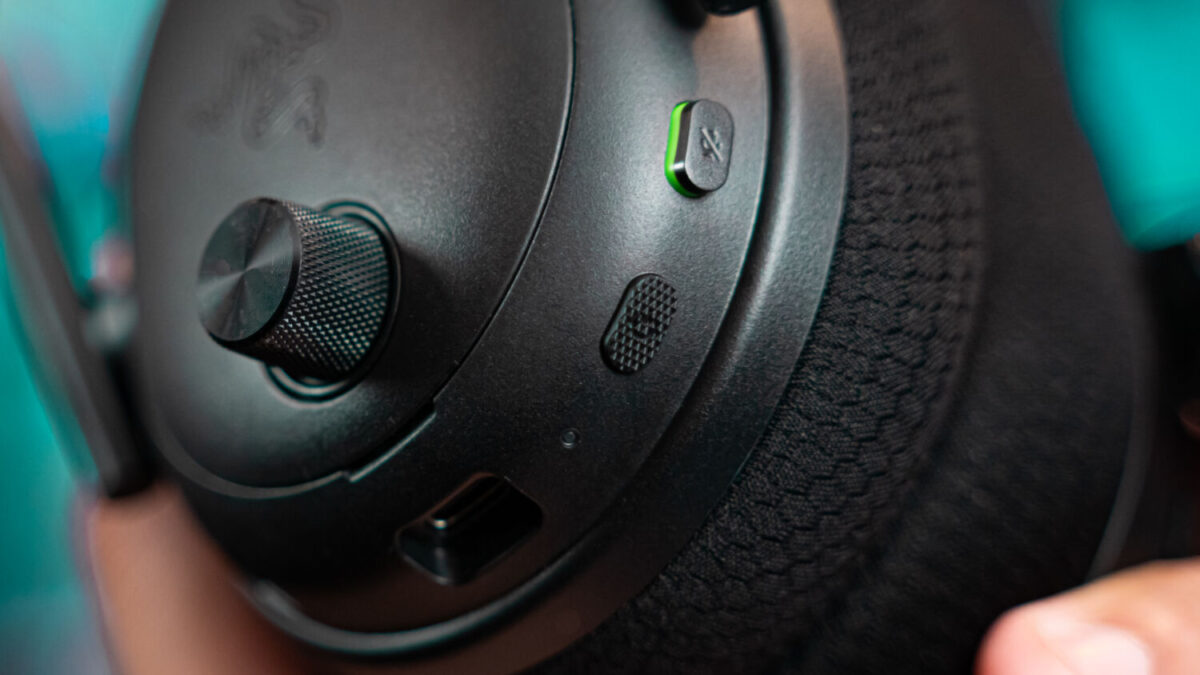
Playing hardcore tactical shooter Ready or Not with the Razer Blackshark V3 Pro was a decent experience, with just enough accuracy to pick up the positions of suspects’ footsteps and chatter behind walls and doors. You can use the “Footsteps Scaling” function – which can be assigned to the additional roller on the right of the headset – to adjust the 125Hz and 250Hz bands specifically, to enhance audio cues that usually fall within those frequencies. This helps with intelligence gathering, especially in other games such as Valorant and Apex Legends that are heavy on audio cues.
The included THX Spatial Audio 7.1.4 experience is fun to use in immersive games like Elden Ring or Ready or Not to make them more atmospheric, but this is not suitable for every game and requires some trial and error to check if spatial audio is supported with the games you play. Surround sound options are dependent on the platform you are playing on, of course, and THX Spatial audio is only available on PC, while Windows Sonic and 3D Tempest audio are available on Xbox and PlayStation, respectively.
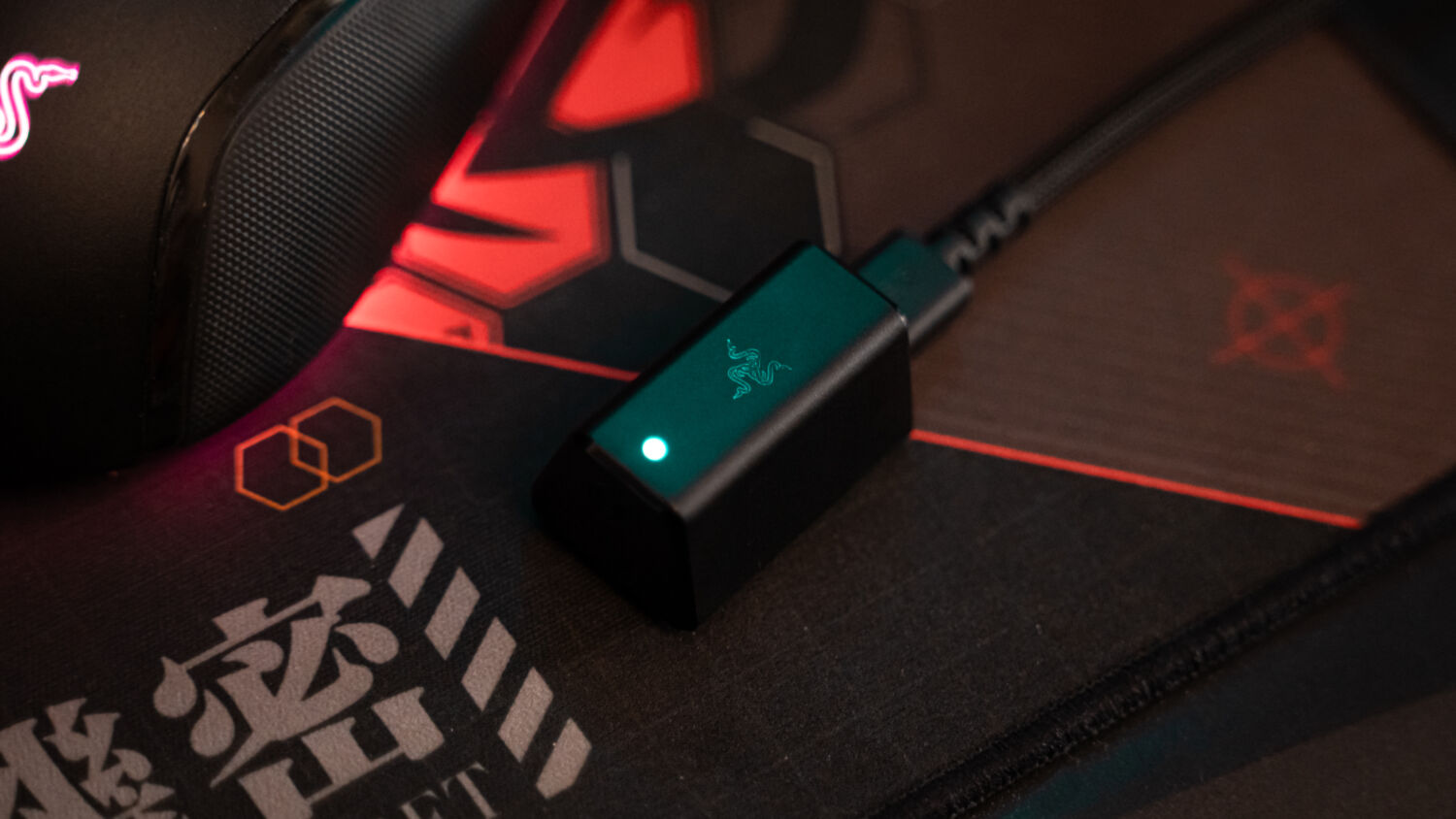
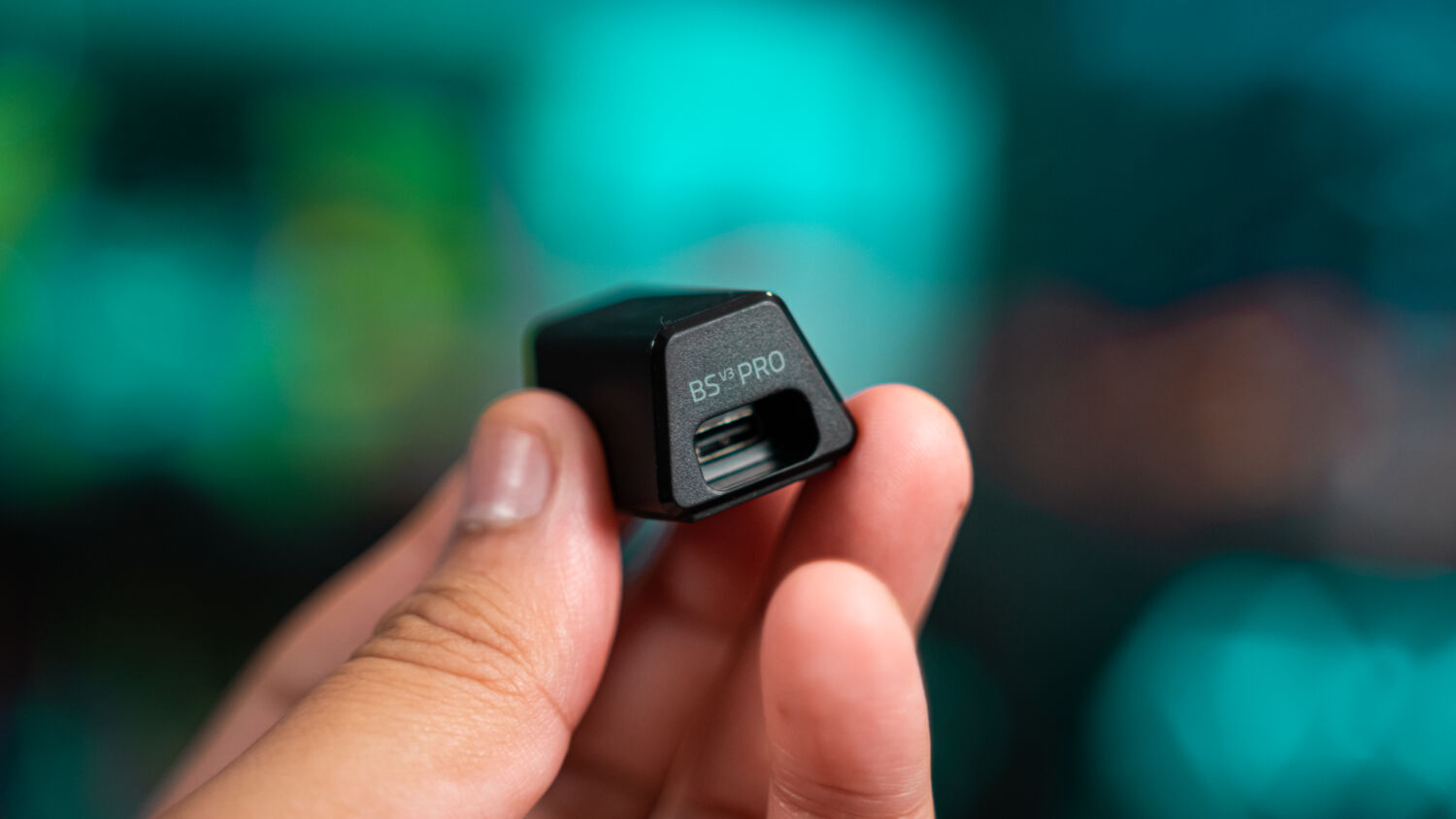
Ultra-low latency is the name of the game with this particular Blackshark, and its cousin, the Razer DeathAdder V4 Pro Wireless Gaming Mouse, are leading the charge with the HyperSpeed Wireless Gen-2 dongle. On the audio front, this promises 2.5GHz latency rates of 10ms, delivering near-instantaneous audio that translates to larger reaction windows for esports professionals, as every in-game second could be the difference between life and death. Receiving information a millisecond quicker is the kind of edge gaming veterans will appreciate as the Blackshark V3 Pro is 5ms faster than some of its higher-end contemporaries from brands like HyperX and Logitech, which is impressive.
Besides enabling its super low-latency audio delivery, the dongle can indicate either connection status or battery life status, with a blinking red warning informing users when the headphones are in dire need of a charge. If you wish to extend its 70 hours of battery life on PC, or 48 hours on Xbox or PlayStation consoles, you can disable the Ultra-Low Latency feature in Razer Synapse, extending both battery life and the headphones’ range without sacrificing latency.
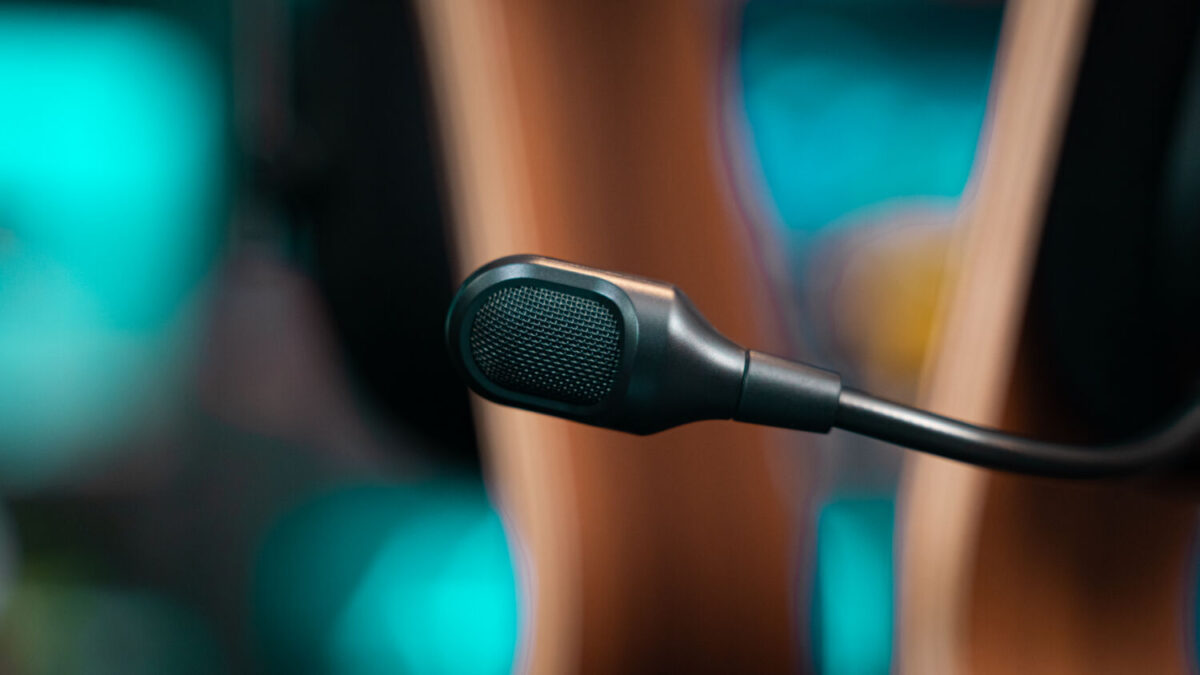
Razer’s HyperClear Full Band 12mm microphone uses a larger capsule and sounds decent, with more than enough clarity to get your message across the voice chat. Working alongside Razer Synapse’s customisable EQ, you can adjust the bands as you wish, or choose from four available presets – all of which work decently, especially the full and warm-sounding Broadcaster option. The microphone on the Blackshark V3 Pro has no major issues, with its bells and whistles serving its main purpose of enhanced communication.
With a hefty price tag of US$249.99, the headphones might seem like a heavy investment for casual gamers, and in more ways than one. The combination of its weight and hardly bearable clamping force makes it difficult to fully recommend the Razer Black V3 Pro, because it compromises comfort for competent audio quality, customisation, and battery life. While fans may rejoice over an upgrade to a beloved headset series, the lack of an ergonomic experience right out of the box spells trouble for any gamer – you can’t win games if your headphones are squeezing your brain, after all.
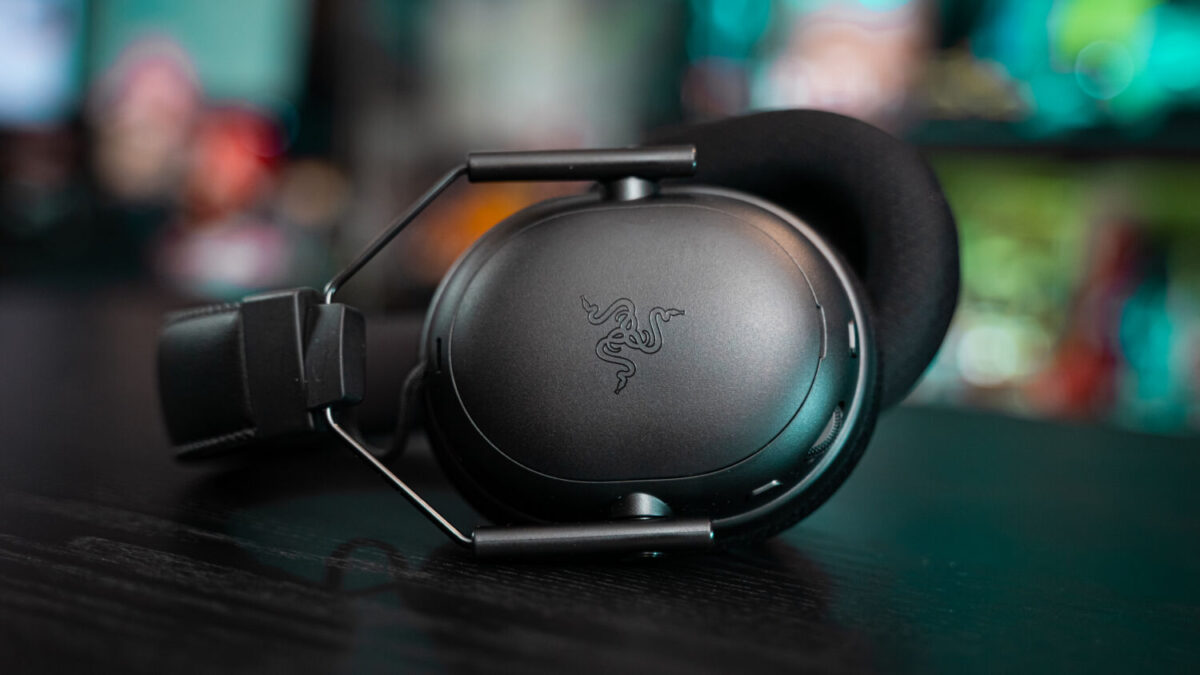
GEEK REVIEW SCORE
Summary
The upgrade everybody has been asking for, the Razer Blackshark V3 Pro is a decent hybrid ANC gaming headset that goes big on features and customisation, but ultimately falls flat due to its hefty weight and strong clamping force.
Overall
7/10-
Aesthetics - 9/10
9/10
-
Build Quality - 9/10
9/10
-
Performance - 5/10
5/10
-
Value - 5/10
5/10
-
Geek Satisfaction - 7/10
7/10
Abandon Reason Know Only War! Zinho is a shooter fanatic still waiting for direct sequels to Black (2006) and Star Wars: Republic Commandos. He also truly believes that the Warhammer 40K universe can take on any franchise and destroy them. To think any different is heresy and punishable by Exterminatus.

